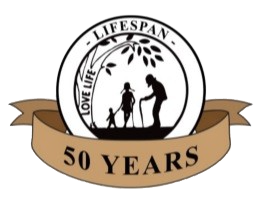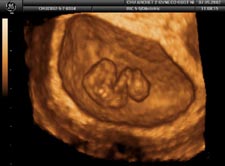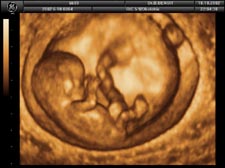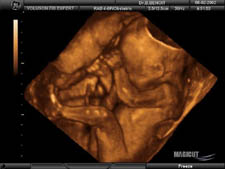PAIN of the PREBORN
What does a preborn child feel during an abortion?
Anatomy of Pain
There are three well established factors that, taken together, provide overwhelming evidence of pain. [1]
- Anatomical/ Neural Development
- Behavioral Responses
- Physiological Responses (the “Fetal Stress Response”)
18 Days Brain
The brain begins to take shape only 18 days after fertilization. By 20 days, the brain has already differentiated into forebrain, midbrain, and hind brain, and the spinal cord has started to grow. [2]
5 Weeks Pain Receptors
Four or five weeks after fertilization, pain receptors appear around the mouth, followed by nerve fibers, which carry stimuli to the brain. By 18 weeks, pain receptors have appeared throughout the body. Around week 6, the fetus first responds to touch. [3] [4]
6 Weeks Cortex
In weeks 6-18, the cerebral cortex develops. By 18 weeks the cortex has a full complement of neurons. In adults, the cortex has been recognized as the center of pain consciousness. [5]
8 Weeks Thalamus
During weeks 8-16, the thalamus develops, functioning as the main relay center in the brain for sensory impulses going from the spinal cord to the cortex. [6] Movement of the fetus in response to external stimuli occurs at this early stage as well. [7]
14-18 Weeks Nerve Tracts
In week 18, nerve tracts connecting the spinal cord and the thalamus are established, and nerves from the thalamus first contact the cortex in week 20. Nerve fibers not routed through the thalamus have already reached the cortex by 14 weeks. [8] [9]
18 Weeks Stress Hormones
As early as 18 weeks, independent stress hormones are released by a fetus injected by a needle, just as they are when adults feel pain. Hormone levels in those babies decrease as pain-relievers are supplied. [10] Painful stimuli also yield vigorous movements and breathing efforts. [11]
Before 18 Weeks?
Even before nerve tract s are fully established, the fetus may feel pain; studies show anencephalic infants, whose cortex is severely reduced if not altogether missing, may experience pain as long as other neurological structures are functioning. [12]
20 Weeks All Parts in Place
With pain receptors, spinal cord, nerve tracts, thalamus, and cortex in place, all anatomical links needed for pain transmission to the brain, for feeling pain, are present.
Sources:
Source: www.doctorsonfetalpain.org – 2012
Fetal Development
| Diary of a pre-born baby: the amazing process of a baby’s development: |
| Day 1: Fertilization: All my human chromosomes are present; I am a unique human life beginning! |
| Weeks 1-2: The DNA in my 46 chromosomes of my one cell contains my individual sex, eye color, shoe size, brain capacity and other physical traits. Before the second week is over, my rapidly developing and multiplying cells give rise to the brain, nervous system, skin, digestive system, muscles, bones and circulatory system. |
|
Week 3: My heart begins to beat with my own blood, (often a different blood type than my mother’s). I am developing rapidly at this time with the formation of the umbilical cord transporting oxygen and nutrients absorbed from my mother’s blood by the placenta.
|
| Week 4: Size of a poppy seed |
|
Week 5: My baby eyes, legs, and hands begin to develop.
|
| Week 6: My brain waves are detectable and can be scientifically measured; mouth, lips present; fingers forming. I begin my first movements. |
|
Week 7: My eyelids, toes form; my nose is distinct; I am kicking and swimming.
|
|
Week 8: Every organ is in place; my bones; fingerprints begin to form. I can swallow amniotic fluid and can be observed hiccupping. Taste and teeth buds are beginning to form.
|
|
Weeks 9 and 10: Teeth continue to form, fingernails develop; my baby head can turn, and sometimes frown.
|
|
Week 10:
|
|
Week 11: I can grasp objects placed in hand; the kidneys begin to form urine and I can mimic the movements of breathing. From this point on, all my body systems are in place and active.
|
|
Week 12: I have reached my peak frequency of movement and rarely pause for more than five minutes. My sex can be visually identified and my face begins to display distinctive characteristics resembling my family.
|
|
Week 13:
|
|
Week 14: My baby heart is pumping several quarts of blood through my body every day. The smallest details are now taking shape. For a couple of weeks now, all the body parts required to experience pain, including all the nerves, spinal cord and thalamus are present.
|
|
Week 15:
|
|
Week 16: I am visibly turning, kicking, doing somersaults, making fine finger movements, wiggling my toes and making a fist.
|
|
Week 17: I can have dream (REM) sleep.
|
|
Week 18:
|
|
Week 19:
|
|
Week 20: I can hear my mother’s voice and feel soothed; I respond to a number of outside stimuli including pats on my mother’s abdomen, music, sudden noises, etc. It is only a matter of time now, with no new parts to form or new body systems to develop! I am eager to be born!Legally, there is no reason this child can’t be aborted at this stage, if the mother finds the child inconvenient, expensive, or simply a bother – this is reason enough to allow her to end her baby’s life. The question of viability or when the baby is able to survive outside the mother is constantly changing. Science has made considerable progress in saving babies anywhere from 19-23+ weeks after fertilization.
|
|
Week 21:
|
|
Week 22:
|
|
Week 23:
|
|
Week 24:
|
|
Week 25:
|
|
Week 26:
|
|
Week 27:
|
|
Week 28:
|
|
Week 29:
|
|
Week 30:
|
|
Week 31:
|
|
Week 32:
|
|
Week 33:
|
|
Week 34:
|
|
Week 35:
|
|
Week 36:
|
|
Week 37:
|
|
Week 38:
|
|
Week 39:
|
|
Week 40:
|



